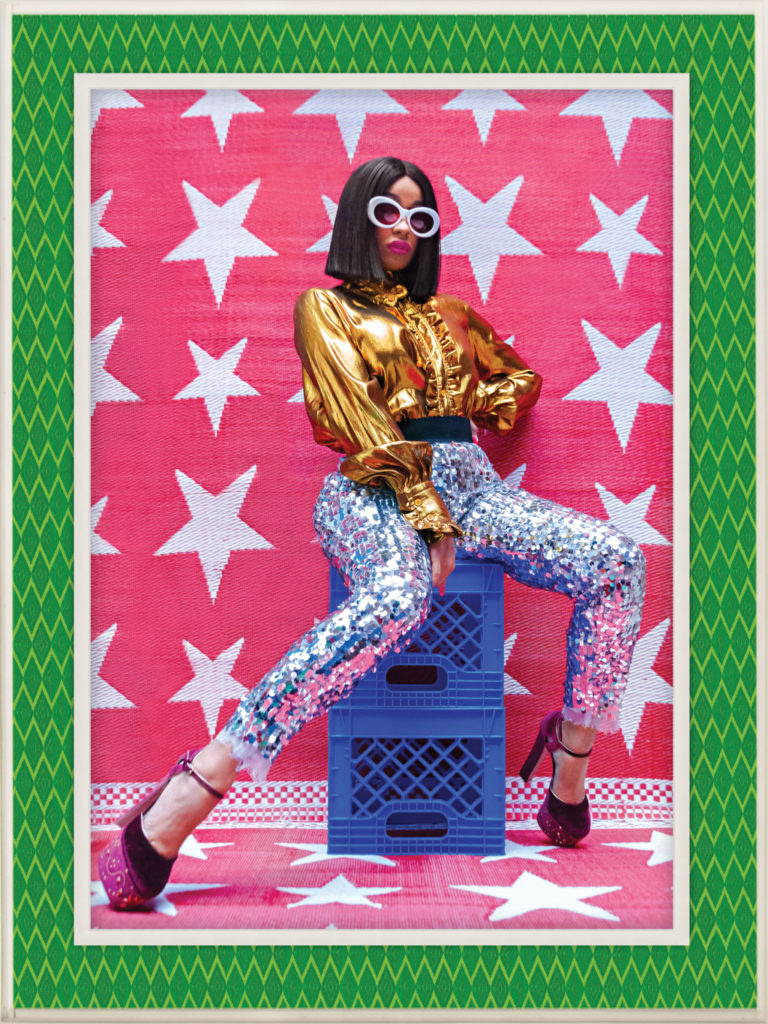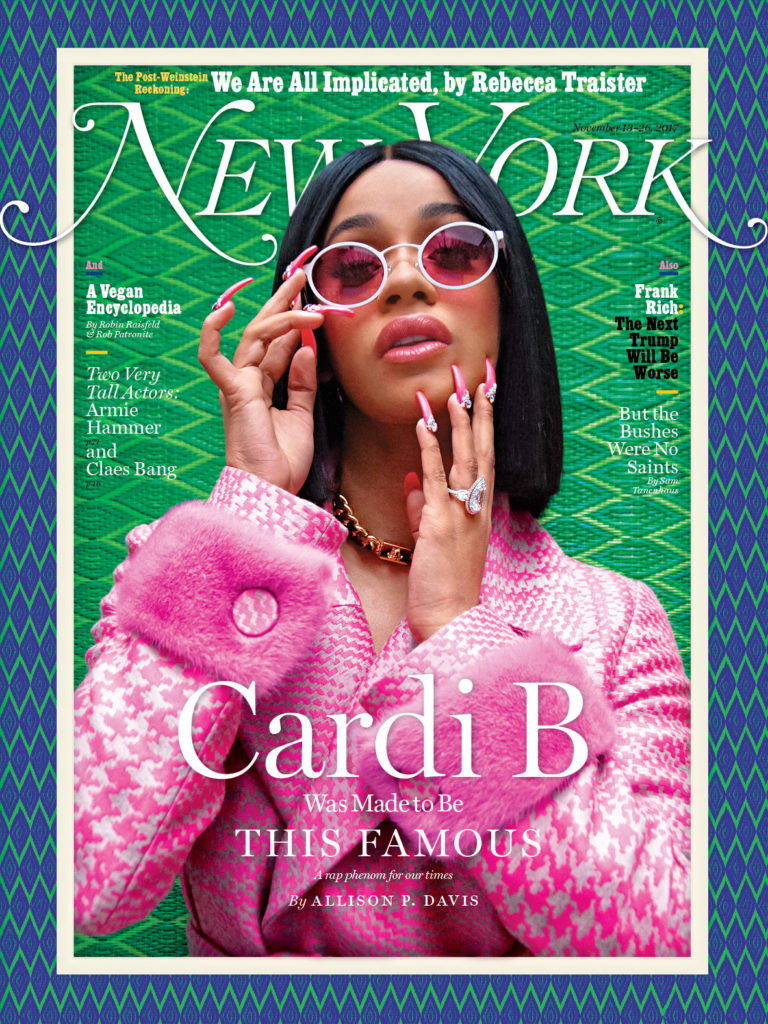Art World
Meet Hassan Hajjaj, the ‘Warhol of Marrakech’ Who Shot Hip-Hop Star Cardi B. for New York Mag
With two shows and a new magazine cover, the photographer has a lot going on these days.

With two shows and a new magazine cover, the photographer has a lot going on these days.

Jazia Hammoudi

Hassan Hajjaj is having a moment. On the heels of opening his new exhibition “La Caravane” at London’s Somerset House in October, the British-Moroccan photographer and filmmaker shot rising hip-hop star Cardi B. for the cover of New York magazine’s November 13th issue. As if that wasn’t enough, Hajjaj is preparing a solo show in Casablanca opening in December. The artist took a break from his busy schedule to speak to artnet News about how he got his start, what it’s like to be labeled the “Andy Warhol of Marrakech,” and why shooting a magazine cover really isn’t about him.
How did you actually start out taking photographs?
I never studied the medium, it all came from a love of photography. I bought a camera from a friend of mine in 1989 and just started taking pictures. I had two photographer friends who taught me the basics, and that was it really. From there, I started taking pictures just for myself, not for an audience or anything—and it kind of just happened.
You’ve been called the “Andy Warhol of Marrakech.” How do you feel about this characterization? Do you identify with Warhol?
I’ve never really said that; journalists have been saying that. I understand why— because I’m using products like him and some similar techniques, so there’s that [visual] connection—but he wasn’t someone I particularly looked for or knew about.
I also think that [I’ve been given this title] because I’m from Morocco. Many artists from North African and the Middle East aren’t allowed to be their own thing, they have to be like someone from the West. So you become secondary, but it doesn’t bother me—I find it funny more than anything. But [the title] is really becoming more and more prevalent, it’s almost like a tattoo on my back.
What are your biggest influences?
I grew up surrounded by creative friends—people doing styling, music videos, photography, filmmaking—so I had a lot of this around me. Because I didn’t study; I looked at images from Cartier-Bresson to Robert Capra to David LaChapelle and Nick Night [and] Malick Sidibe in magazines. I’ve really been influenced by music; I used to do a lot of underground parties and met so many DJs and bands, so my environment has always been my biggest influence. I had a small store in London from 1984 to 1992, and that shop exposed me to a lot of people with artistic backgrounds—artists, fashion and graphic designers, musicians.
How do you pick your subjects? Is there a collaborative element to your process?
There is definitely an element of collaboration. Most of my subjects are people I’ve known for a long time, and friends of friends. So that’s also how things started for me. I realized that I was surrounded by all these incredible, creative people who influenced me and supported me, so it’s also about trust and showcasing these “underdogs” that do something from the heat and have talent. It’s also about documenting these people from all over the world, trying to make images that document the present but could also be the future—there’s an aspect of storytelling.

The November 13 cover of New York magazine featuring Cardi B., as shot by Hassan Hajjaj. Photo courtesy of New York magazine.
You recently shot the cover of New York magazine with Cardi B. How is shooting a celebrity for a magazine cover different from your other photography work?
It was interesting and professional. She had lost a very expensive watch that morning, so her mind was elsewhere, and she wasn’t the Cardi B that everyone knows from Instagram. But she was very professional, so bless her; she worked, despite the watch.
For me, that kind of work—it’s not about me, it’s about her and the magazine, so I was trying to deliver a good job for her and for them. That was really important for me. It’s great that the magazine believed in me, and let me go all the way to create these photographs. We really worked as a team. Work I do for myself is different—I choose the subject, we know each other, and I set the stage. For this shoot, I flew to New York and met her on set, tried to get her body language, so it was an interesting exercise because I don’t normally do this kind of commercial work. There’s a lot more pressure involved.
Your signature motif is the border of convenience-store goods from the Morocco. How did you develop this format? Is this a format you plan to employ indefinitely, or what do you think is your next step?
My early work was all about Arab products, and when I started doing photography, I decided to bring that element into it. These borders repeat and mimic the mosaic patterns of Morocco, and on top of that, it’s the strength of the brands—it’s easy for people to “read” so to speak, even though it’s from another culture.
It’s an entry for people into a foreign culture. The graphic nature of these products and their recognizability makes them accessible for people not familiar with North Africa. Growing up I was really influenced by graffiti artists and graphic designers, so this was a way to bring something of my culture into my work that looks cool. They really capture people’s attention, and from there you can look more deeply and find other things in the work.
What’s next? What are you working on?
I have a big solo show on December 5th in Casablanca at L’Atelier 21, called “My Maroc Stars.” All the subjects are Moroccan—from singers to acrobats to henna girls, DJs, producers, fashion designers, etc. And, next year, I’m doing a project with refugee women in Beirut, and also raising money for a documentary, so there’s a lot going on.
The November 13 issue of New York magazine is available on newsstands now. “La Caravane” will be on view a Somerset House in London through January 7, 2018.